Bees the world over would rejoice if everyone knew just two things about them: what they aren’t, and what they are.
1. What they aren’t.
If you’ve been stung, it was probably courtesy of yellow jackets, bee-like wasps whose primary purpose in life is to make bees look bad. They’re shaped kind of like honeybees and they are striped kind of like honeybees. But unlike honeybees, they love people-food and they will fight you for it. They’re especially fond of soda, fruit, and go bug-crazy for barbecue sauce. Essentially, they dress up like bees, wreak havoc at your picnic, sting a few people just for fun, and then blame it on bees.
Yellowjackets love people-food and they will fight you for it.
Like all wasps, they can sting repeatedly but unlike most wasps, they seem to enjoy it. They make their nests in the ground or in rock walls, not far from where you’re working, playing or digging and, like honey badger, they don’t care. When people talk about aggressive “ground bees,” they’re almost always referring to these wasps.
Generally, if a person is stung by an actual bee, rather than a yellow jacket impersonating a bee, it’s because they have stepped on one of them with bare feet while the bee was visiting a clover or other low-growing flower and, I mean, come on, wouldn’t you? Or because they disturbed a nest of European honeybees– highly social bees that build hives in tree holes and sometimes human-built structures.
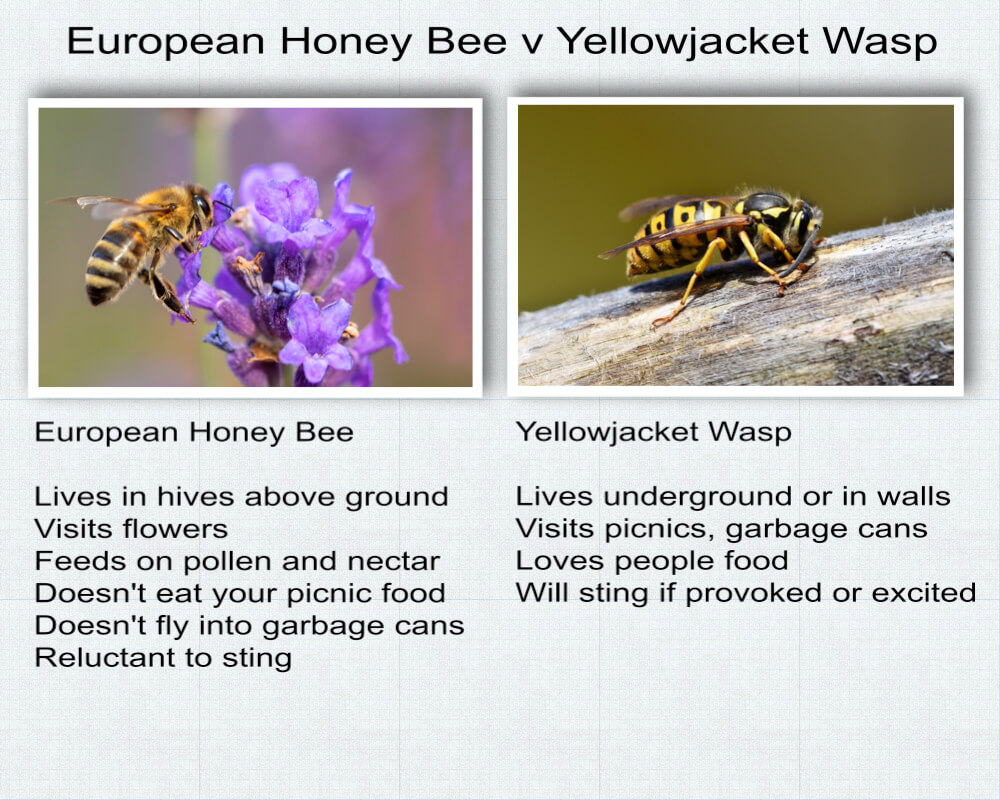
So now you’re probably saying “Wait a minute! What about those huge menacing bees, marauding back and forth near my house, and buzzing loudly whenever I approach?” Well, those are male carpenter bees, defending their territory and trying to impress female carpenter bees, and they will be extremely upset when I let you in on a secret: they have no stingers. Only female bees can sting, and they have more important things to do– like sipping nectar, gathering pollen and making nests– than wasting their time flying back and forth and threatening you.
But even though these male bees can’t hurt you, it’s only polite to act scared when they approach you, stingerless and buzzing menacingly. Ideally, you should act terrified and yell “please don’t hurt me, bee!” especially if any female carpenter bees happen to be nearby.
In sum, if you’re minding your own business, trying to enjoy a picnic or other outdoor gathering, and a bee-like insect is bothering you, it’s a yellow jacket. Yes, they are valuable members of the animal kingdom and help control insect pests, so we should stop daydreaming about exterminating them right now and get back to writing. But we can all at least stop confusing them with bees.
Which brings us to…
2. What they are.
Imagine if the only birds anyone talked about were ducks. And not wild ducks– like mallards and wood ducks– but white domestic farm ducks, like this:
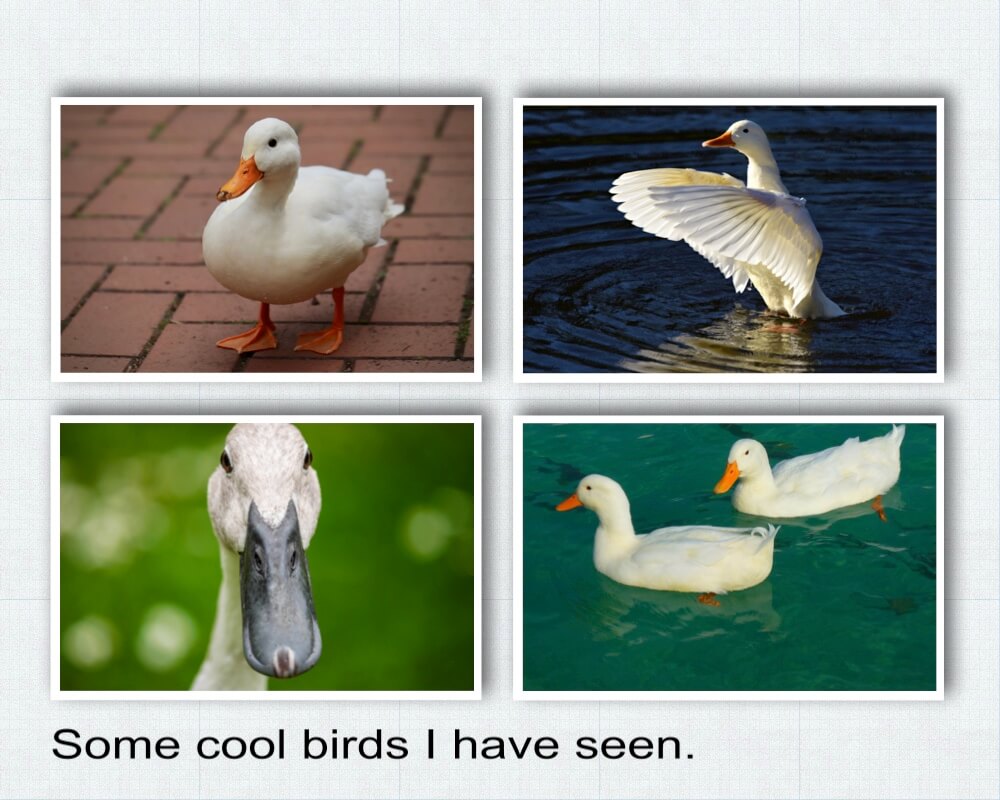
They’d say “Hey, look at this cool bird I saw today!” and it’s a picture of a white duck. And then someone else says, “Cool! But look at this other bird I saw!” and it’s another white duck.
You’d probably say “Hey, farm ducks are great, and very important, and it’s great that you’re so into them, but they’re not the only kinds of birds in the world.”
And they’d say “What are you talking about?”
And you’d say: “Well, there are also eagles and hummingbirds and bluebirds!” (you show them pictures)
And they’d say: “Wait, those are birds? They don’t look like birds to me!”
And you’d say: “Well, that’s because all you ever look at are farm ducks.”
Well just replace “farm ducks” with “European honeybees,” and that will tell you why bee scientists spend so much time banging their heads on their worktables.
Bees are incredibly diverse– even more diverse than birds– and yet lots of people equate them with European honeybees, which are actually domesticated farm bees. They are native only to – surprise! – Europe, but were introduced into North America and many other parts of the world because of their promiscuous pollinating habits and Brobdingnagian honey production. These twin attributes make honeybees immensely valuable and, like cows, chickens and ducks, they have been bred to enhance their commercial value.
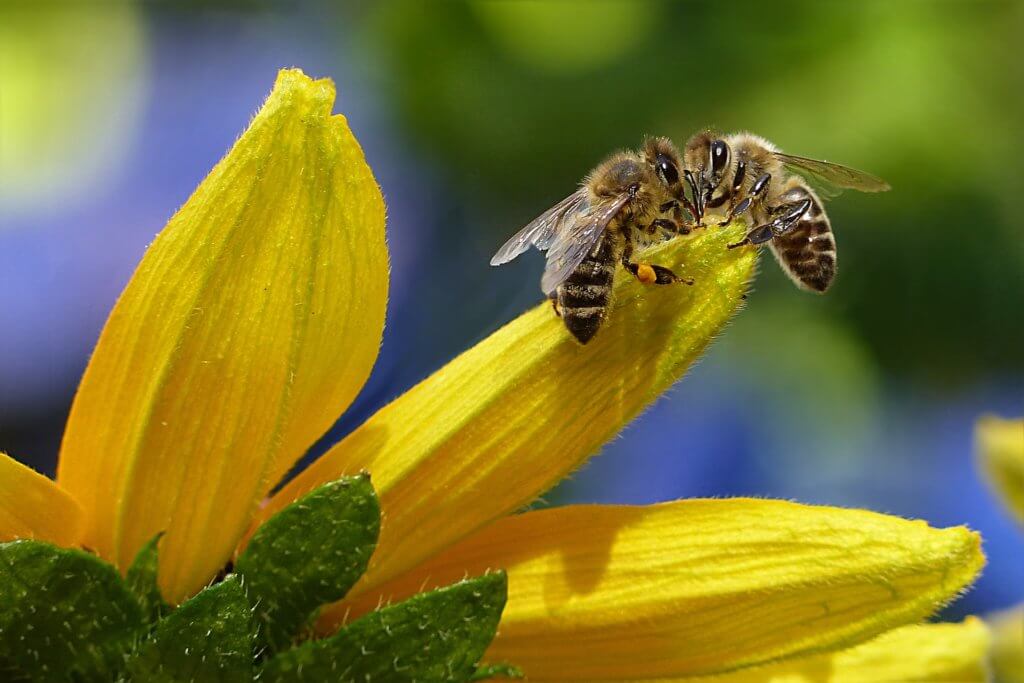
There are many highly publicized “Save the Bees!” efforts, and almost all of them focus on these domesticated insects. And it’s true that saving European honeybees from parasites, diseases and rampant overuse of pesticides is important, especially from a commercial standpoint. It’s also true that having honeybees act as the posterbugs of bee conservation has its advantages: they’re charismatic and they have a rich history. Also, many of the measures that we can take to protect honeybees– like planting flowers and reducing the use of pesticides– are good for native bees as well as honeybees.
Wait, native bees?
Yes, there are over 20,000 species of bees worldwide– 4400 species native to North America alone– and these bees are vastly more important from an ecological perspective. They co-evolved with our native flowers over millions of years and, in some cases, one species of bee specializes on one species of flower, and one will languish or even die without the other. Overall, bees are part of immensely complex ecowebs that scientists are just beginning to figure out. That’s why protecting native bees, like bumblebees, carpenter bees, sweat bees, mason bees, and so many others, is critical to maintaining our natural ecosystems.
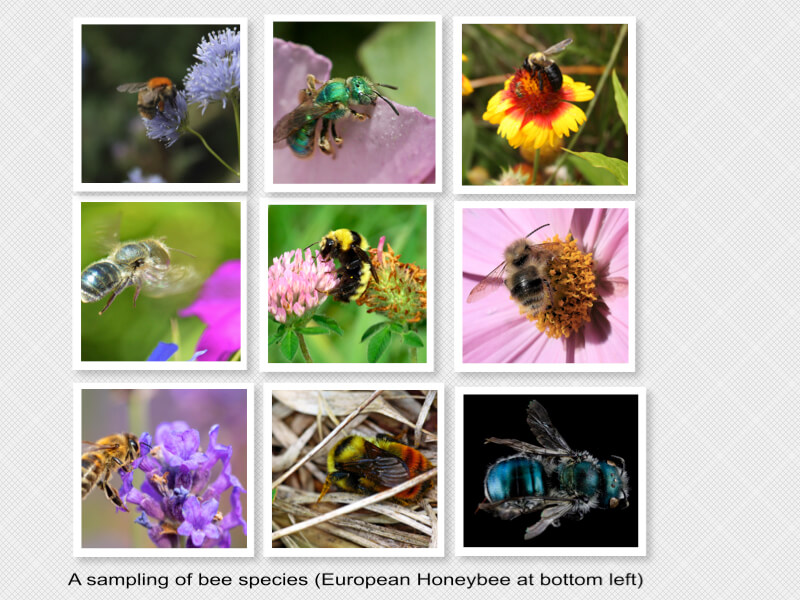
Bees come in all sizes and colors and levels of fuzziness. Some little ones could be mistaken for fruit flies. Some bumblebee species grab onto blossoms and vibrate them like crazy at exactly the right frequency to shake their pollen loose (it’s called sonication). Some bees have insanely long tongues, because they specialize on flowers that keep their sugary “nectaries” hidden deep inside. Mason bees are short, stubby bees that make little homes out of mud. Some species of bees don’t build hives or nests at all, but lay their eggs in the hives of other bees that unknowingly “adopt” them.
Wherever you are, there are dozens of kinds of bees around you right now, doing cool and interesting things, and looking cool while doing them. Check out this bee guide from Utah State University to learn about some of the more common types of bees and how to identify them. The more people know about native bees and their importance, the more inclined they’ll be to appreciate and conserve them.

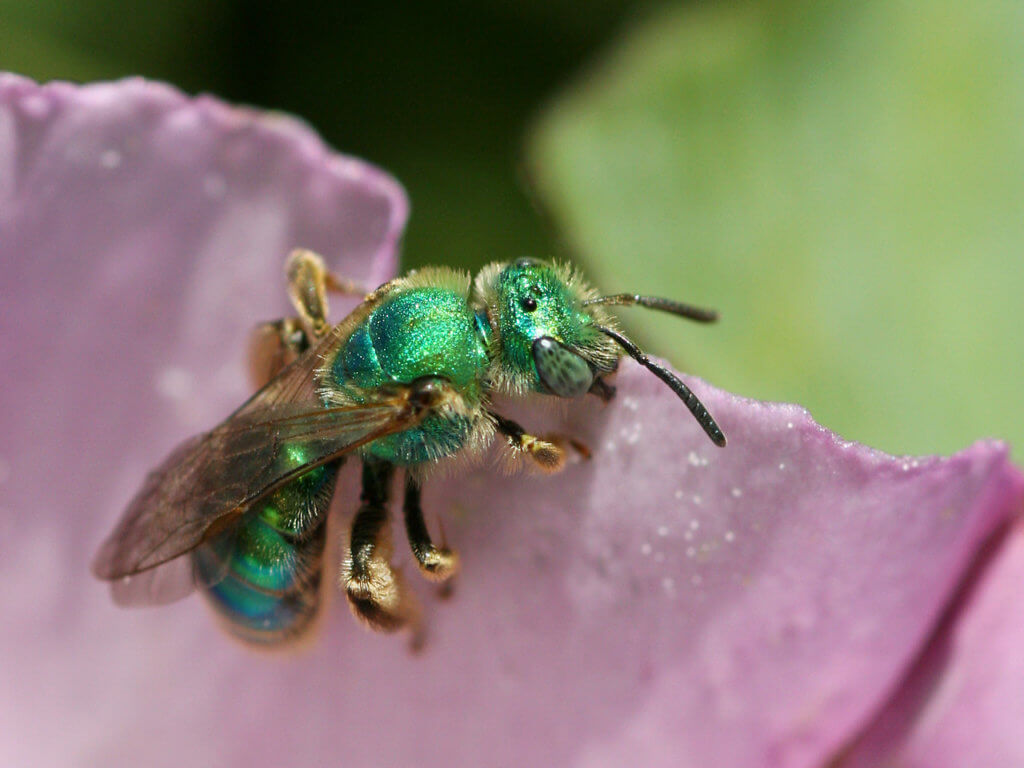
 Cicada Brood X is Gone (But They’ll Be Back)
Cicada Brood X is Gone (But They’ll Be Back)